January is a magical time to explore the diverse wonders of India. As the New Year begins, the country comes alive with vibrant festivals, pleasant weather, and a plethora of incredible destinations to discover. From the snow-capped Himalayas in the north to the sun-kissed beaches of the south, India offers a wide array of experiences for travelers in January.
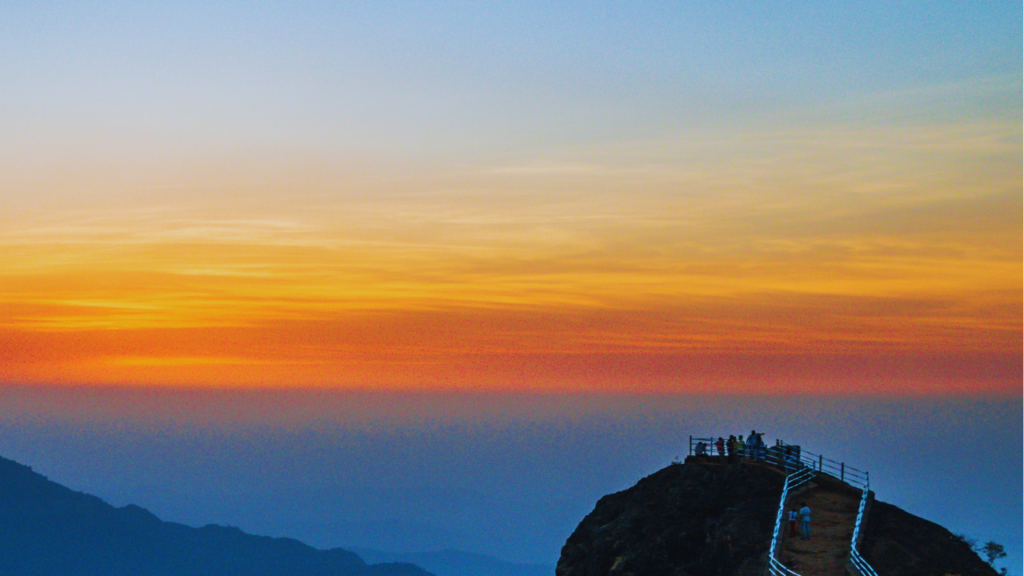
In this blog post, we’ll dive into the weather conditions, top destinations, festivals, and travel tips to help you plan an unforgettable trip to India in January.
- Weather Conditions across India in January
- Temperature Of India in January
- North India in January
- South India in January
- West India in January
- East India in January
- Exploring the Cultural Heritage of Kolkata
- Kolkata
- Festivals and Events in India in January
- Packing Tips for Travelling to India in January
- Must-Have Travel Accessories for a January Trip
- Travel Tips for Exploring India in January
- Final Thoughts on Planning Your January Trip
Weather Conditions across India in January
India experiences a variety of weather conditions in January, depending on the region. The northern parts of the country, including the Himalayas, experience cold winters with occasional snowfall. The plains of North India have cool and dry weather, making it an ideal time for sightseeing.In contrast, South India enjoys pleasant temperatures with minimal rainfall, perfect for beach vacations and outdoor activities. The coastal regions may experience slightly higher humidity compared to the rest of the country.
Temperature Of India in January
The temperature in India during January varies significantly from north to south. In the northern regions, including cities like Delhi and Jaipur, the average temperature ranges from 7°C to 20°C (45°F to 68°F). The nights can be quite chilly, so it’s essential to pack warm clothing.
As you move towards the southern parts of India, the temperature becomes more pleasant. Cities like Mumbai, Goa, and Chennai experience average temperatures ranging from 20°C to 30°C (68°F to 86°F). The weather is comfortable for exploring the beaches, temples, and other attractions.
The Coldest Place in India in January is Dras in Ladakh, with temperatures falling to a minimum of -20°C (-4°F).

The Hottest/Warmest Place in India in January is Kanyakumari, the southernmost tip of India, with the temperature rising to a maximum of 32°C (90°F).

Did you Know?
Dras, located in the Kargil district of Ladakh, is known as the “Gateway to Ladakh” and is the coldest inhabited place in India. It is often referred to as the “Second Coldest Inhabited Place in the World” after Oymyakon in Russia.
Top Destinations to Explore in India in January
India offers a wealth of destinations to explore in January, catering to various interests and preferences. From the majestic Himalayas to the serene backwaters of Kerala, there’s something for everyone. Here are some of the top destinations to consider for your January trip to India: 25 Best Places to Visit in India in January
North India in January
North India in January is a winter wonderland, offering a unique blend of natural beauty and cultural richness.
Experiencing Winter in the Himalayas
What better place to experience winters than the Himalayas! The snow-capped mountains, pristine valleys, and serene landscapes create a magical atmosphere. Here are two of my favorite places in North India to experience winters in the Himalayas:
Shimla, Himachal Pradesh
- Location: Shimla is the capital city of Himachal Pradesh, nestled in the foothills of the Himalayas.
- Famous For: Colonial architecture, scenic beauty, toy train ride, and winter sports.
- Average Temperature: 2°C to 10°C (36°F to 50°F)
- Weather Conditions: Cold and dry with occasional snowfall.

Shimla in January is a picturesque winter wonderland. The city is blanketed in snow, creating a magical atmosphere. Visitors can enjoy ice skating, skiing, and cable car rides while admiring the stunning views of the Himalayas. The Mall Road, with its colonial architecture and charming cafes, is a must-visit.
Auli, Uttarakhand
- Location: Auli is a ski resort town located in the Chamoli district of Uttarakhand.
- Famous For: Skiing, cable car ride, and panoramic views of the Himalayas.
- Average Temperature: -2°C to 10°C (28°F to 50°F)
- Weather Conditions: Cold and snowy, perfect for winter sports.

Auli is a paradise for adventure enthusiasts in January. The town offers excellent skiing facilities, with slopes suitable for both beginners and advanced skiers. The cable car ride from Joshimath to Auli provides breathtaking views of the snow-covered mountains. Visitors can also enjoy trekking, snowboarding, and exploring the nearby Nanda Devi National Park. You should look forward to go to Auli if you are planning to visit Uttarakhand.
Exploring Historical Cities Like Delhi and Jaipur
January is an ideal time to explore the historical cities of North India, such as Delhi and Jaipur. The cool and dry weather makes sightseeing a pleasant experience.
Delhi
- Location: Delhi is the capital city of India, located in the northern part of the country.
- Famous For: Historical monuments, street food, shopping, and cultural diversity.
- Average Temperature: 7°C to 20°C (45°F to 68°F)
- Weather Conditions: Cool and dry with occasional fog.

Delhi in January is a delight for history buffs and food lovers. The cool weather makes it perfect for exploring the city’s iconic landmarks like the Red Fort, Qutub Minar, and Humayun’s Tomb. The vibrant street food scene, with delicacies like chole bhature and parathas, is a must-try. The Republic Day parade on January 26th is a grand spectacle showcasing India’s cultural heritage. January is a really good time to visit Delhi in India.
Jaipur
- Location: Jaipur is the capital city of Rajasthan, known as the “Pink City” for its distinctive pink-colored buildings.
- Famous For: Forts, palaces, handicrafts, and traditional Rajasthani cuisine.
- Average Temperature: 8°C to 22°C (46°F to 72°F)
- Weather Conditions: Cool and dry with clear skies.
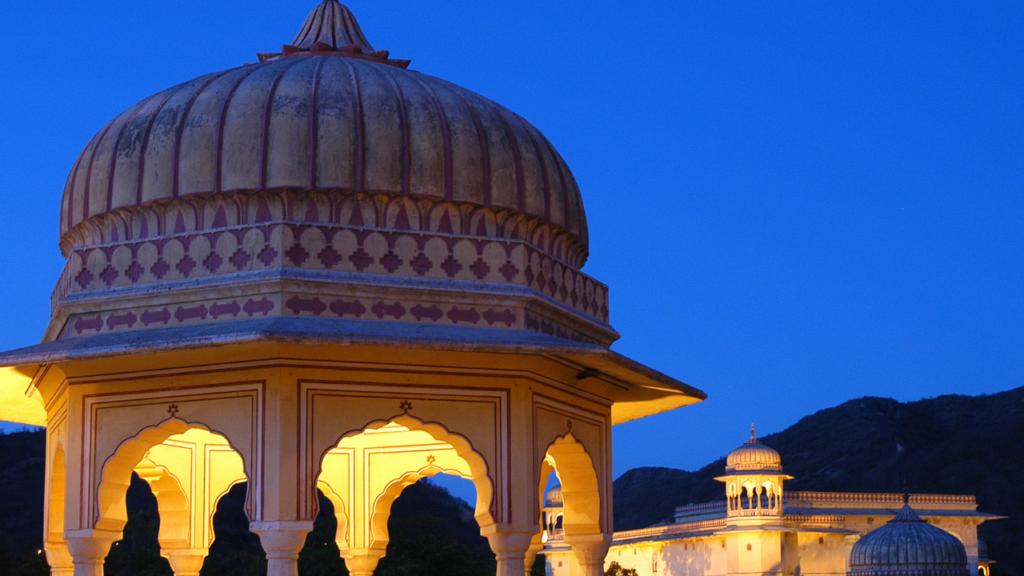
Jaipur in January is a perfect blend of history, culture, and shopping. The majestic forts and palaces, such as the Amber Fort and City Palace, are a testament to the city’s rich heritage. The colorful bazaars offer a wide range of handicrafts, textiles, and jewelry. The cool weather makes it ideal for exploring the city’s attractions and indulging in traditional Rajasthani delicacies. January is a great time to travel to Rajasthan, specially Jaipur.
Visiting the Golden Temple in Amritsar
Amritsar, home to the iconic Golden Temple, is a must-visit destination in January. The cool weather enhances the spiritual ambiance of the temple complex. Visitors can witness the daily Palki Sahib ceremony, where the holy book of the Sikhs, the Guru Granth Sahib, is carried in a golden palanquin. The langar (free community kitchen) at the temple serves delicious vegetarian meals to thousands of devotees every day. The Jallianwala Bagh memorial nearby is a poignant reminder of India’s struggle for independence.
South India in January
South India in January offers a pleasant escape from the harsh winter of the north. The region boasts stunning beaches, lush landscapes, and rich cultural heritage.
Enjoying the Beaches of Goa and Kerala
January is the perfect time to enjoy the beautiful beaches of Goa and Kerala. The pleasant weather and minimal rainfall make it ideal for sunbathing, swimming, and water sports.
Goa
- Location: Goa is a small state located on the western coast of India, known for its beautiful beaches and vibrant nightlife.
- Famous For: Beaches, water sports, seafood, and Portuguese-influenced architecture.
- Average Temperature: 20°C to 32°C (68°F to 90°F)
- Weather Conditions: Pleasant and sunny with minimal rainfall.
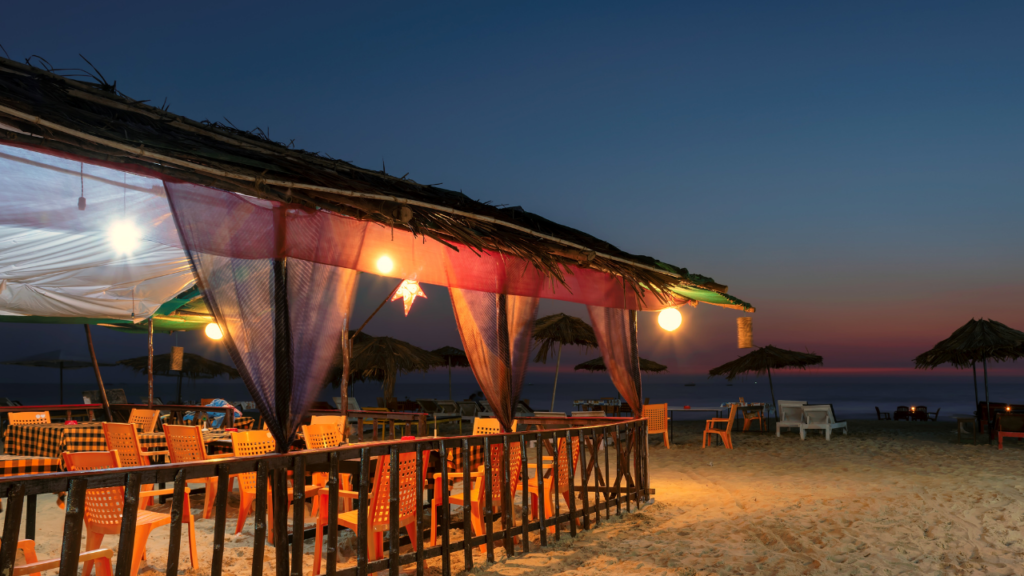
Goa in January is a perfect beach getaway. The weather is ideal for sunbathing, swimming, and indulging in water sports like parasailing and jet skiing. The famous beaches like Baga, Calangute, and Anjuna are bustling with activity. The seafood is fresh and delicious, and the nightlife is vibrant with beach parties and music festivals.
Backwater Cruises in Kerala
The serene backwaters of Kerala are best explored on a houseboat cruise in January. The cool breeze and tranquil waters create a soothing ambiance. Visitors can witness the daily life of the locals along the banks, with lush paddy fields, coconut groves, and traditional villages. The Alappuzha (Alleppey) and Kumarakom regions are popular for backwater cruises. The fresh seafood and traditional Kerala cuisine served on the houseboats are a gastronomic delight.
Discovering the Cultural Heritage of Tamil Nadu
Tamil Nadu is a treasure trove of cultural heritage, and January is an ideal time to explore its ancient temples and vibrant traditions.
Chennai
- Location: Chennai is the capital city of Tamil Nadu, located on the Coromandel Coast of the Bay of Bengal.
- Famous For: Temples, beaches, classical dance and music, and South Indian cuisine.
- Average Temperature: 20°C to 29°C (68°F to 84°F)
- Weather Conditions: Pleasant with occasional sea breeze.
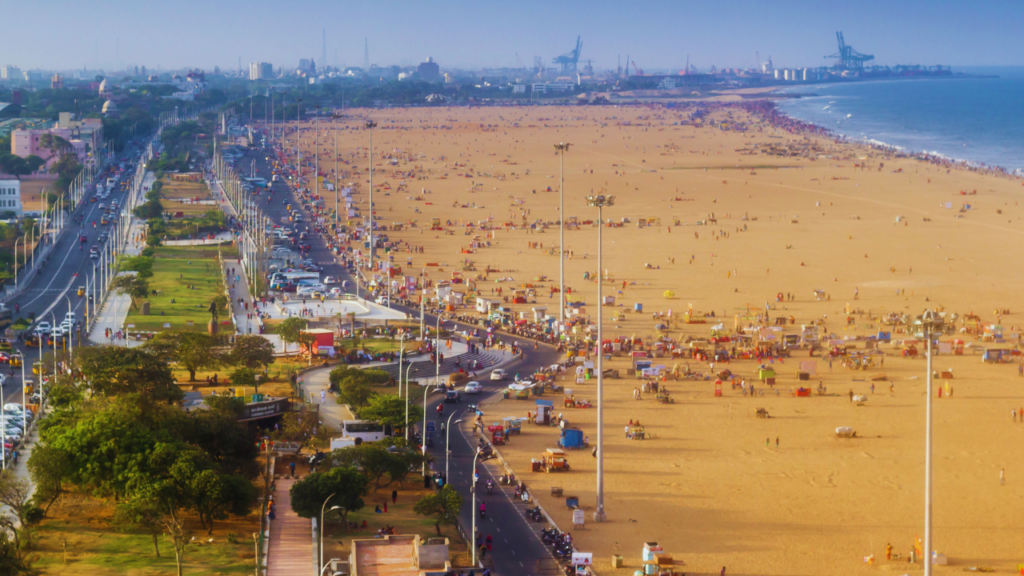
Chennai in January is a cultural delight. The city is known for its ancient temples like the Kapaleeshwarar Temple and the Parthasarathy Temple. The Marina Beach, one of the longest beaches in the world, is a popular spot for evening strolls and street food. The classical dance and music performances during the Chennai Music Season in January are a treat for art lovers.
Madurai
- Location: Madurai is a city in Tamil Nadu, famous for its ancient temples and rich cultural heritage.
- Famous For: Meenakshi Amman Temple, Thirumalai Nayakkar Mahal, and Jallikattu (bull-taming sport).
- Average Temperature: 20°C to 30°C (68°F to 86°F)
- Weather Conditions: Pleasant and dry.
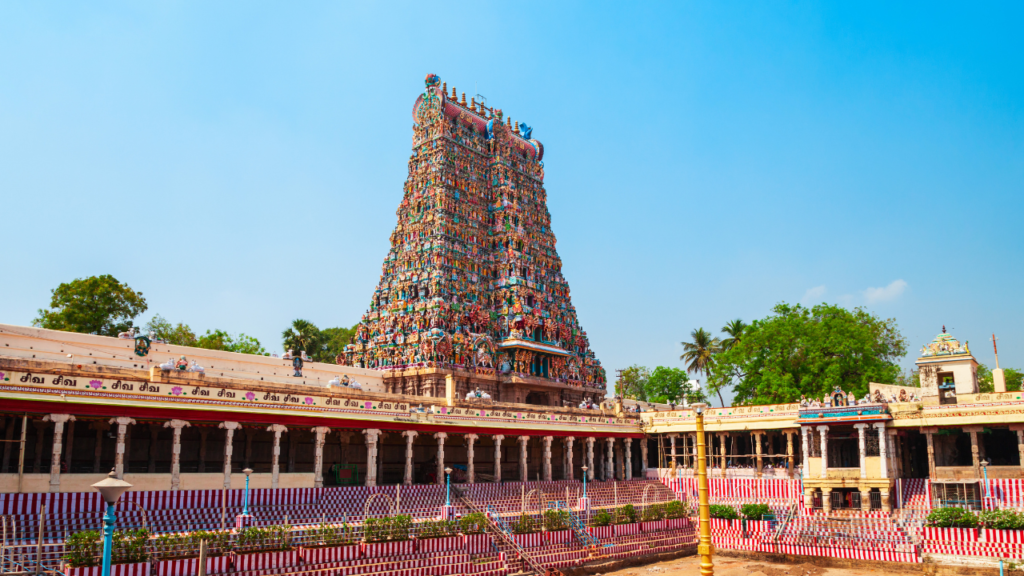
Madurai in January is a spiritual and cultural experience. The Meenakshi Amman Temple, with its towering gopurams and intricate sculptures, is a marvel of Dravidian architecture. The Thirumalai Nayakkar Mahal, a 17th-century palace, showcases the grandeur of the Nayak dynasty. The Jallikattu festival, held during the Pongal celebrations, is a thrilling spectacle of bravery and tradition.
West India in January
West India in January offers a mix of cultural experiences, desert adventures, and vibrant festivals.
Exploring the Rann of Kutch during the Rann Utsav
The Rann of Kutch, a vast salt desert in Gujarat, comes alive during the Rann Utsav in January. The festival showcases the rich cultural heritage of the region, with colorful handicrafts, folk music, and dance performances.
Kutch
- Location: Kutch is a district in the state of Gujarat, known for its unique landscape and cultural diversity.
- Famous For: Rann of Kutch (salt desert), handicrafts, and Rann Utsav (cultural festival).
- Average Temperature: 12°C to 27°C (54°F to 81°F)
- Weather Conditions: Cool and dry with chilly nights.
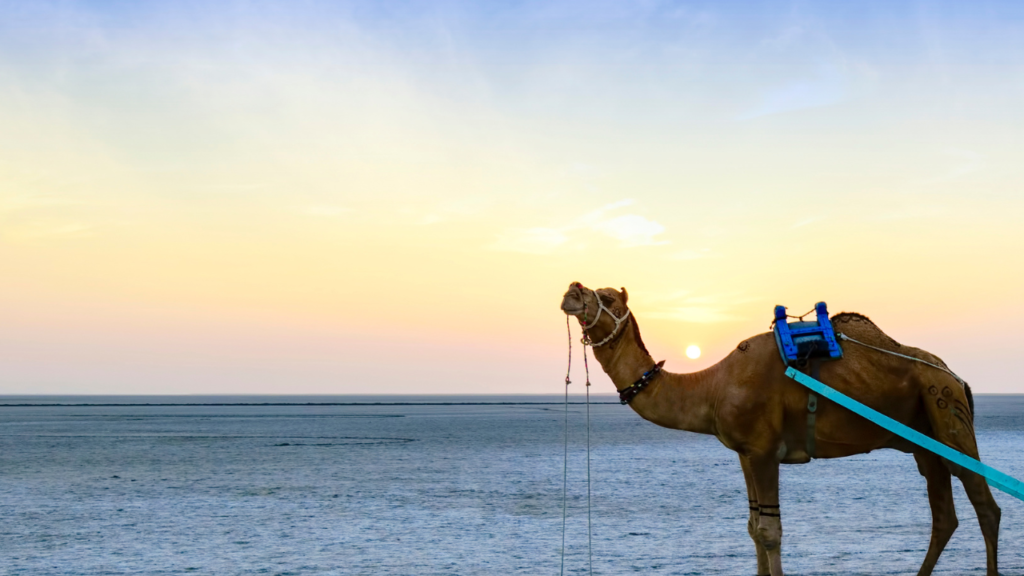
Kutch in January is a magical experience, especially during the Rann Utsav. The vast expanse of the white salt desert is a sight to behold. Visitors can stay in luxury tents, enjoy cultural performances, and witness the colorful handicrafts of the region. The Kalo Dungar (Black Hill) offers panoramic views of the Rann, and the Dholavira archaeological site showcases the ancient Indus Valley Civilization.
Ahmedabad
- Location: Ahmedabad is the largest city in Gujarat, known for its rich history and architectural heritage.
- Famous For: Sabarmati Ashram, Adalaj Stepwell, and Kite Festival (Uttarayan).
- Average Temperature: 12°C to 28°C (54°F to 82°F)
- Weather Conditions: Cool and dry with clear skies.
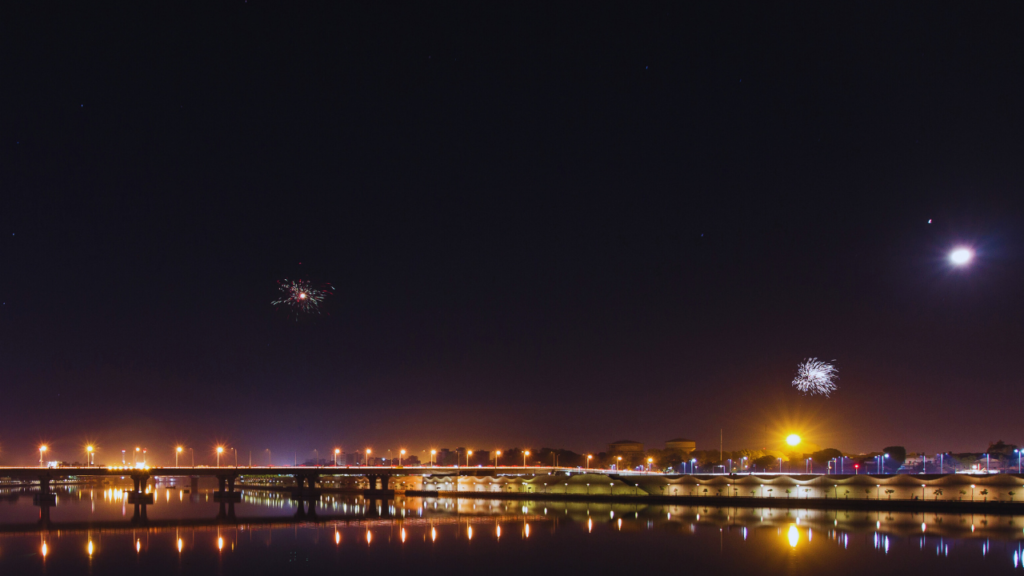
Ahmedabad in January is a cultural and festive delight. The Sabarmati Ashram, where Mahatma Gandhi lived, is a symbol of India’s freedom struggle. The Adalaj Stepwell is a stunning example of Indo-Islamic architecture. The Kite Festival, held on January 14th, fills the sky with colorful kites and is a joyous celebration. The street food of Ahmedabad, like the famous dabeli and fafda-jalebi, is a must-try.
Visiting the Desert Landscapes of Rajasthan
January is the perfect time to explore the desert landscapes of Rajasthan. The cool and dry weather makes it comfortable to visit the sand dunes and enjoy camel safaris.
Thar
- Location: The Thar Desert, also known as the Great Indian Desert, is located in the northwestern part of India, covering parts of Rajasthan, Gujarat, and Punjab.
- Famous For: Sand dunes, camel safaris, and desert camps.
- Average Temperature: 8°C to 24°C (46°F to 75°F)
- Weather Conditions: Cool and dry with chilly nights.
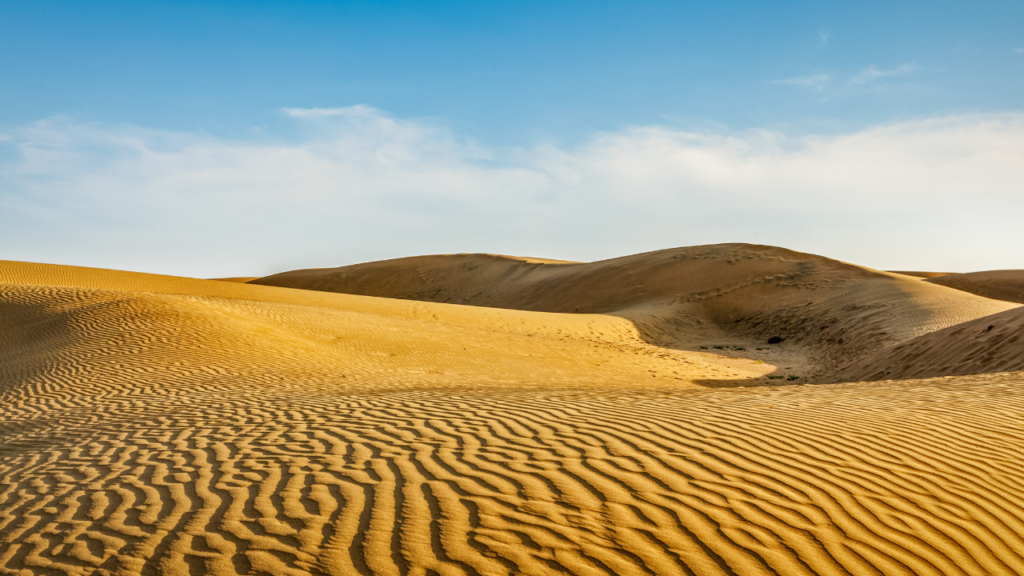
The Thar Desert in January is a surreal experience. The vast expanse of golden sand dunes stretches as far as the eye can see. Visitors can enjoy camel safaris, witness stunning sunrises and sunsets, and stay in traditional desert camps. The Jaisalmer Fort, a UNESCO World Heritage Site, is a majestic structure rising from the desert. The cultural performances and traditional Rajasthani cuisine at the camps add to the authentic desert experience.
East India in January
East India in January offers a blend of natural beauty, cultural heritage, and festive celebrations.
Discovering the Scenic Beauty of the Northeast in January
The northeastern states of India, known as the “Seven Sisters,” are a treasure trove of natural beauty and cultural diversity. The cool and pleasant weather in January makes it an ideal time to explore the region.
Shillong
- Location: Shillong is the capital city of Meghalaya, known as the “Scotland of the East” for its rolling hills and picturesque landscapes.
- Famous For: Waterfalls, lakes, and living root bridges.
- Average Temperature: 4°C to 16°C (39°F to 61°F)
- Weather Conditions: Cool and pleasant with occasional mist.
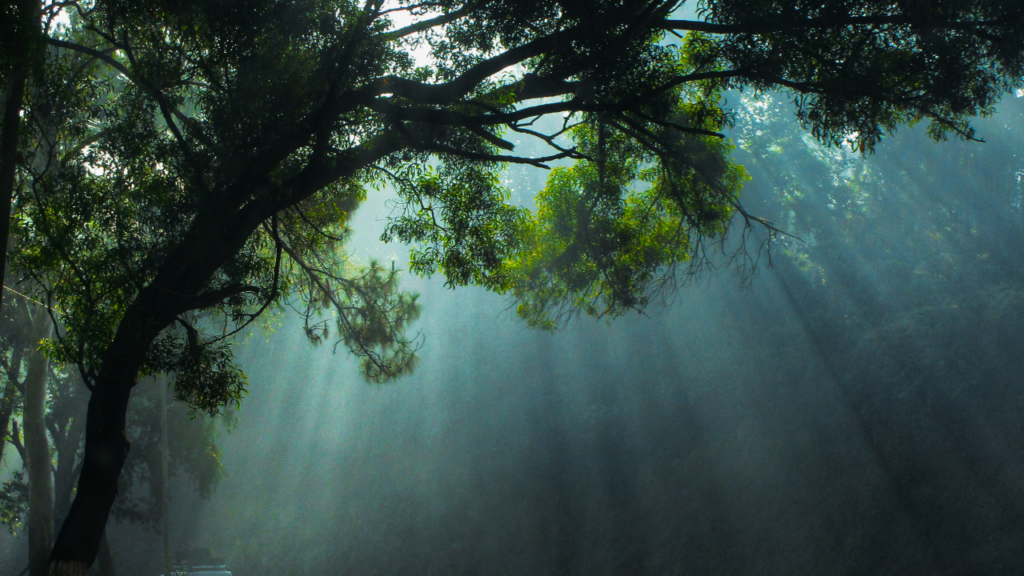
Shillong in January is a nature lover’s paradise. The city is surrounded by stunning waterfalls like the Elephant Falls and the Sweet Falls. The Umiam Lake, also known as Barapani, offers breathtaking views and boating opportunities. The living root bridges, made by intertwining the roots of rubber trees, are a unique natural wonder. The Shillong Peak, the highest point in the city, provides panoramic views of the surrounding hills.
Gangtok
- Location: Gangtok is the capital city of Sikkim, nestled in the eastern Himalayas.
- Famous For: Monasteries, scenic beauty, and adventure sports.
- Average Temperature: 4°C to 12°C (39°F to 54°F)
- Weather Conditions: Cold and dry with clear skies.
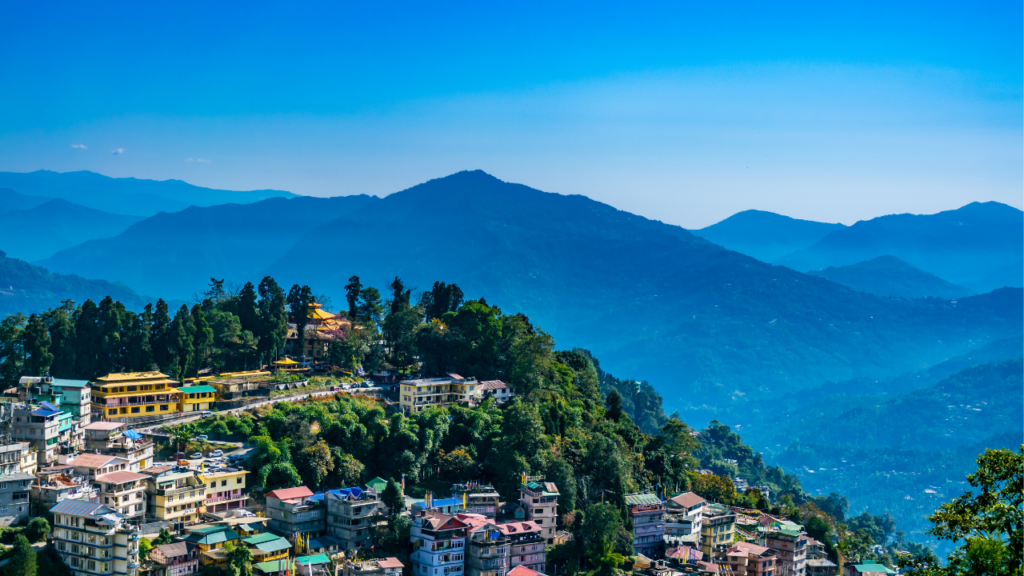
Gangtok in January is a serene and spiritual experience. The city is home to several ancient Buddhist monasteries like the Rumtek Monastery and the Enchey Monastery. The Nathu La Pass, a high-altitude mountain pass connecting India and China, offers stunning views of the snow-capped peaks. Adventure enthusiasts can enjoy hiking, mountain biking, and river rafting. The Tsomgo Lake, a glacial lake at an altitude of 12,400 feet, is a visual treat with its crystal-clear waters.
Exploring the Cultural Heritage of Kolkata
Kolkata, the cultural capital of India, is a city steeped in history, art, and literature. January is a great time to explore its colonial architecture, vibrant festivals, and delectable cuisine.
Kolkata
- Location: Kolkata is the capital city of West Bengal, located on the banks of the Hooghly River.
- Famous For: Colonial architecture, literary heritage, and Durga Puja festival.
- Average Temperature: 12°C to 26°C (54°F to 79°F)
- Weather Conditions: Pleasant and dry with occasional morning mist.

Kolkata in January is a cultural and intellectual hub. The city is known for its colonial architecture, including the Victoria Memorial and St. Paul’s Cathedral. The Howrah Bridge, an iconic landmark, offers stunning views of the river. The literary heritage of Kolkata comes alive in the book fairs and literary festivals held in January. The Kalighat Temple, dedicated to Goddess Kali, is a significant pilgrimage site. The street food of Kolkata, like the famous kathi rolls and phuchkas, is a gastronomic delight.
Festivals and Events in India in January
India is a land of festivals, and January is no exception. The month is filled with vibrant celebrations that showcase the country’s rich cultural heritage.
Makar Sankranti
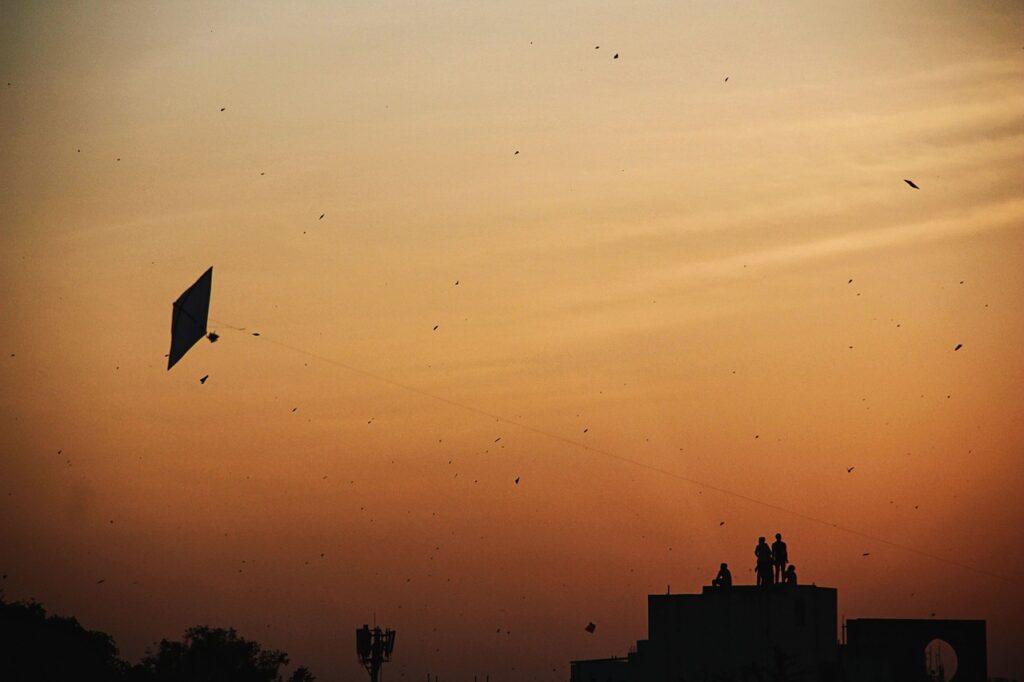
Makar Sankranti is a Hindu festival celebrated across India in mid-January. It marks the end of the winter solstice and the beginning of longer days. People celebrate by flying kites, enjoying traditional sweets, and taking holy dips in rivers. The festival signifies the arrival of spring and the harvest season.
The Kite Festival in Gujarat
The Kite Festival, also known as Uttarayan, is a joyous celebration held on January 14th in Gujarat. The sky comes alive with colorful kites of all shapes and sizes. People of all ages participate in kite flying competitions and enjoy traditional Gujarati delicacies like undhiyu and jalebi. The festival attracts kite enthusiasts from around the world and is a visual spectacle not to be missed.
Harvest Celebrations Across the Country
January is a time for harvest celebrations in many parts of India. Farmers thank the gods for a bountiful harvest and celebrate with family and friends. In Punjab, the festival of Lohri is celebrated with bonfires, music, and dance. People gather around the fire, throw popcorn and other offerings, and sing folk songs. In Assam, the Magh Bihu festival marks the end of the harvesting season. People prepare traditional dishes, participate in sports and games, and enjoy cultural programs.
Republic Day
Republic Day is celebrated on January 26th to commemorate the adoption of the Indian Constitution. The main celebration takes place in New Delhi, with a grand parade showcasing India’s military might and cultural diversity.
Celebrations in New Delhi
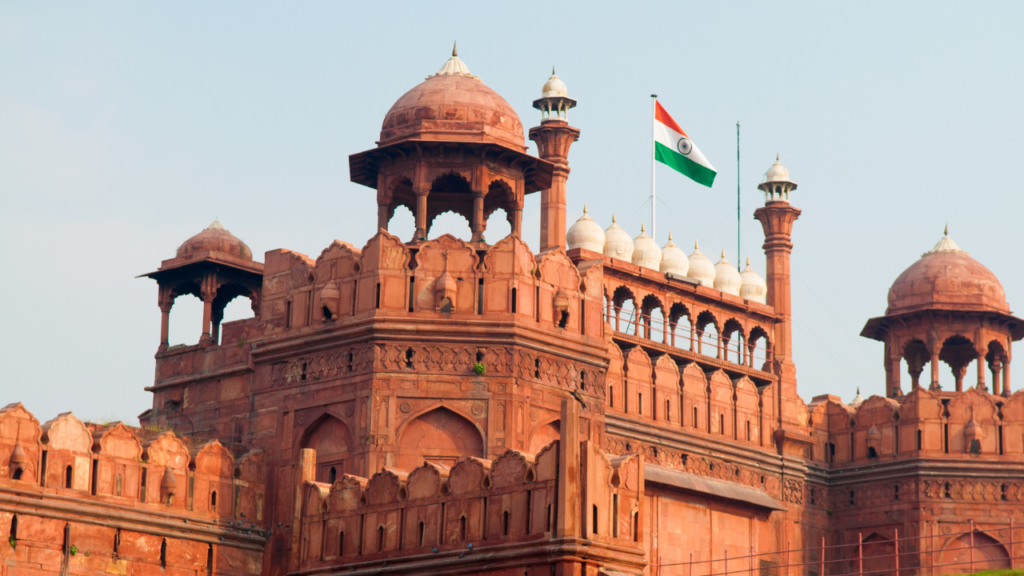
The Republic Day celebrations in New Delhi are a grand affair. The day begins with the Prime Minister paying homage to the fallen soldiers at the Amar Jawan Jyoti. The President of India then unfurls the national flag at the Rajpath, followed by the parade. The parade showcases India’s military prowess, with displays of tanks, missiles, and fighter jets. The cultural floats and performances add color and vibrancy to the celebrations.
Parades and Cultural Events Nationwide
Republic Day is celebrated with great enthusiasm across the country. State capitals and major cities hold their own parades and cultural events. Schools and colleges organize patriotic programs, and people come together to celebrate the spirit of unity and diversity. The day is a reminder of India’s struggle for independence and its commitment to democracy.
Pongal
Pongal is a four-day harvest festival celebrated in Tamil Nadu in mid-January. The festival marks the beginning of the Tamil month of Thai and is a time for thanksgiving and celebration.
The Harvest Festival in Tamil Nadu
Pongal is a significant festival for the people of Tamil Nadu. The first day, called Bhogi Pongal, is dedicated to Lord Indra, the god of rain. People discard old belongings and welcome new ones. The second day, called Surya Pongal, is dedicated to the Sun God. People prepare the traditional Pongal dish made with rice, milk, and jaggery and offer it to the gods.
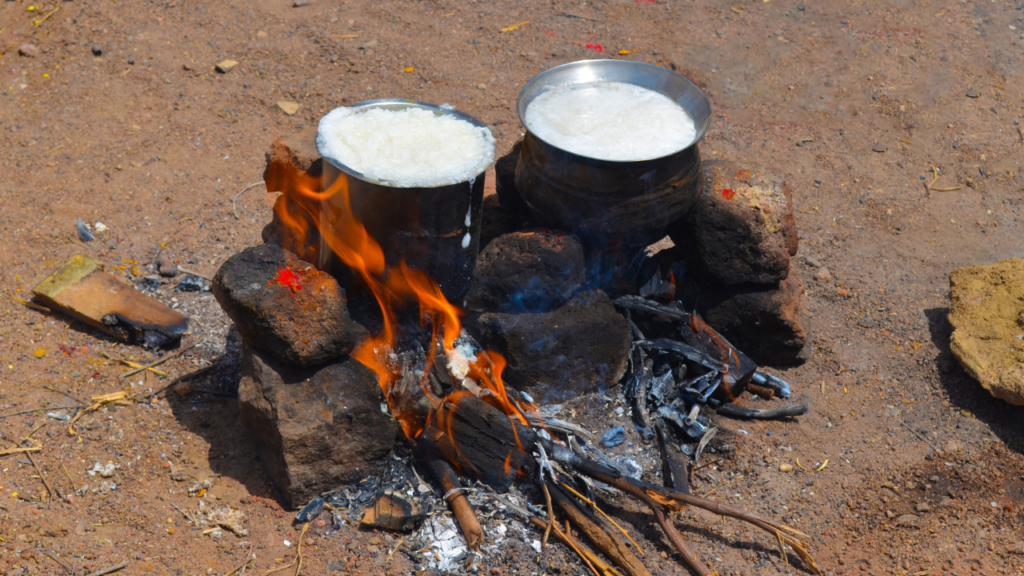
The third day, called Mattu Pongal, is dedicated to cattle, which are an integral part of agriculture. Cattle are adorned with garlands, painted horns, and bells, and are worshipped for their contribution to the harvest.
Traditional Customs and Celebrations
Pongal is a time for traditional customs and celebrations. Women wear colorful sarees and adorn themselves with flowers and jewelry. Kolams, intricate designs made with rice flour, are drawn at the entrance of homes to welcome prosperity and good luck. People visit temples, exchange gifts, and enjoy cultural programs. The Jallikattu, a traditional bull-taming sport, is also held during the Pongal celebrations, showcasing the bravery and agility of the participants.
Packing Tips for Travelling to India in January
Packing smartly is essential for a comfortable and enjoyable trip to India in January. The weather can vary significantly from region to region, so it’s important to pack accordingly. Here are some packing tips to keep in mind:
Essential Winter Clothing for Northern India
If you’re traveling to northern India in January, make sure to pack warm clothing. The temperatures can drop significantly, especially in the evenings and early mornings. Pack layers like thermal innerwear, sweaters, jackets, and warm socks. A warm hat, gloves, and a scarf will also come in handy. If you’re planning to visit the Himalayas, pack heavy winter gear like down jackets and snow boots.
Light and Comfortable Attire for Southern India
Southern India experiences pleasant weather in January, with warm days and cool evenings. Pack light and breathable clothing like cotton shirts, t-shirts, and shorts. A light jacket or sweater will suffice for the evenings. If you’re visiting temples or religious sites, make sure to pack clothing that covers your shoulders and knees as a sign of respect.
Must-Have Travel Accessories for a January Trip
Apart from clothing, there are some must-have travel accessories that will make your January trip to India more comfortable and enjoyable. Pack a good quality sunscreen with a high SPF to protect your skin from the sun. A hat or cap will also provide additional sun protection. Carry a reusable water bottle to stay hydrated on the go. A power bank will come in handy to keep your devices charged during long days of sightseeing. Don’t forget to pack a universal travel adapter to charge your electronics.
Travel Tips for Exploring India in January
Traveling to India in January can be a delightful experience if you keep a few things in mind. Here are some travel tips to help you make the most of your trip:
How To Stay Healthy While Travelling Across India in January
India is a vast country with diverse cuisines and water sources. To stay healthy during your trip, it’s important to take some precautions:
- Drink only bottled or filtered water and avoid ice cubes in drinks.
- Be cautious while eating street food and opt for freshly cooked, hot meals from reputable vendors.
- Carry hand sanitizer and wet wipes to maintain hygiene on the go.
- If you have any pre-existing medical conditions, make sure to carry your medications and prescriptions.
- Pack a small medicine kit with essentials like anti-diarrheal medicine and basic first aid supplies.
- Take malaria precautions depending on your destination, as dengue fever risk is highest from July to December2.
- Consider getting travel insurance that covers medical emergencies.
Safety Tips for Traveling in India
Understanding specific safety considerations is crucial when traveling in India. Some key tips:
- Avoid carrying large amounts of cash, especially in crowded places. Keep valuables locked up and avoid displaying expensive gadgets publicly.
- Use ATMs cautiously and opt for licensed money changers. Consider prepaid travel cards for convenience and security.
- If traveling solo, exercise caution, avoid walking alone at night, and use reliable transportation. Share your location with family and friends.
- Dress modestly and respect local customs and dress codes, as Indians typically wear conservative clothing.
- Enroll in the Safe Traveler Enrollment Program (STEP) and keep friends and family informed about your travel plans.
Immersing in the Culture and Supporting Locals
India’s cultural diversity is mesmerizing. To truly experience it:
- Research the customs and traditions of the regions you’ll visit to understand and respect cultural norms.
- Opt for homestays and locally-owned businesses over large chains to have authentic experiences and support local communities.
- Bargain respectfully when shopping and research fair tipping practices to avoid exploitation.
- Buy souvenirs directly from local artisans to support them.
- Pack reusable water bottles and shopping bags to minimize single-use plastics.
Pace Yourself and Prioritize Experiences
India is best explored at a relaxed pace, not rushed:
- Don’t try to see too much – aim to really experience places rather than just checking sights off a list.
- A good rule is to pick one region per two weeks. Immerse yourself without racing around.
- Consider a small group tour for your first trip to help navigate the country with more ease.
- Visit top attractions early in the morning to avoid crowds.
- Make an effort to explore the countryside, national parks, mountains, and villages, not just cities.
I hope these tips help you plan a safe, immersive, and rewarding trip to India in January! Let me know if you have any other questions by mailing me on [email protected]
Conclusion – Spirit of India in January
January is a month that captures the true spirit of India. From the snow-capped Himalayas to the sun-kissed beaches, from the vibrant festivals to the rich cultural heritage, India offers a multitude of experiences for travelers. The pleasant weather, colorful celebrations, and warm hospitality make January an ideal time to explore the country. Whether you’re a history buff, a nature lover, or a cultural enthusiast, India has something to offer for everyone.
Final Thoughts on Planning Your January Trip
Planning a trip to India in January requires some preparation and research. Make sure to choose your destinations based on your interests and preferences. Book your accommodations and transportation in advance to avoid last-minute hassles. Pack smartly and keep in mind the weather conditions of the places you’ll be visiting. Most importantly, come with an open mind and a sense of adventure to fully immerse yourself in the magic of India.
I hope this blog post has provided you with valuable insights and inspiration for planning your January trip to India. If you have any further questions or need personalized recommendations, feel free to reach out to me. You can also check out my YouTube channel for more travel tips and vlogs.
Happy travels!





